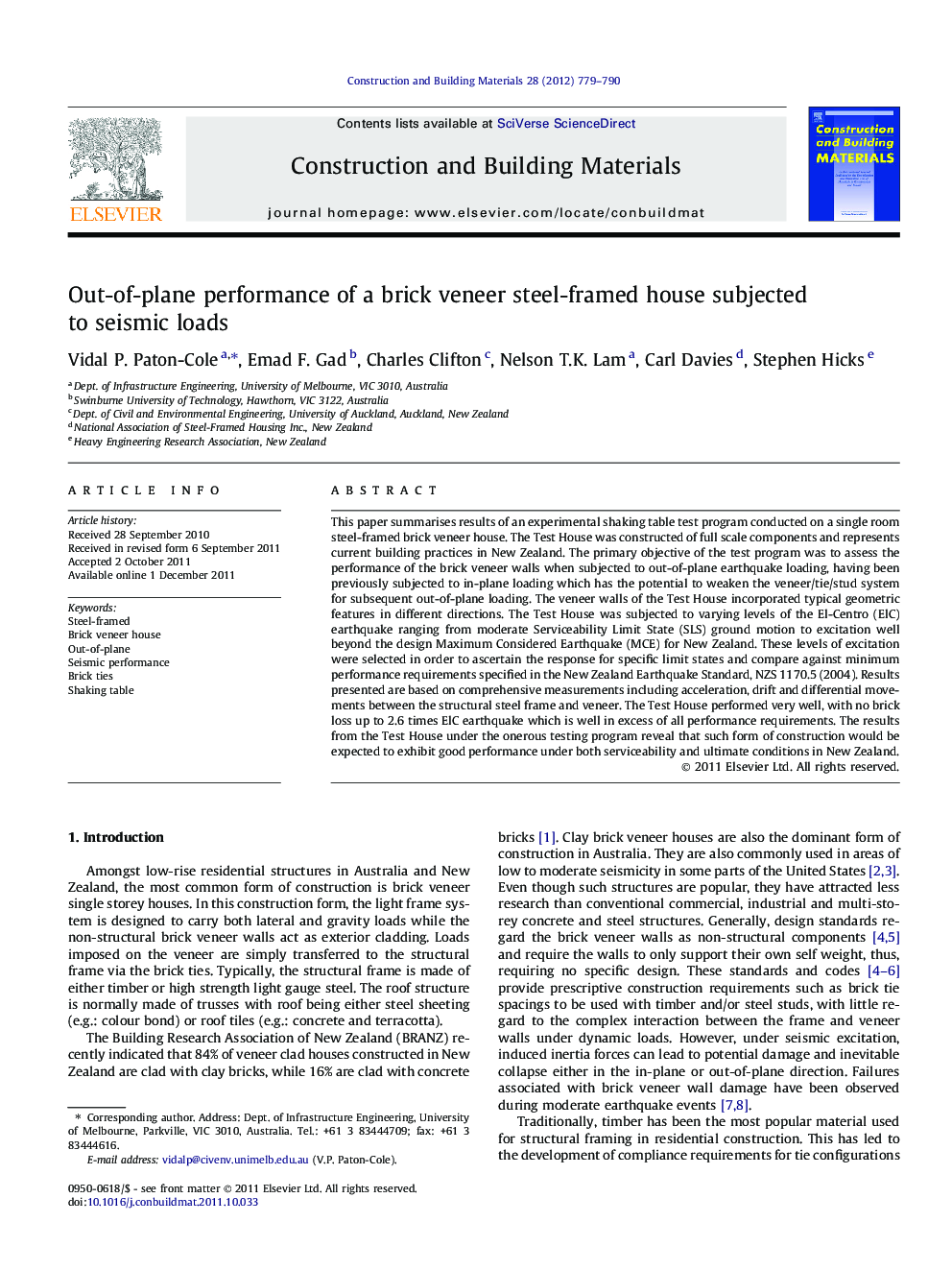| Article ID | Journal | Published Year | Pages | File Type |
|---|---|---|---|---|
| 259637 | Construction and Building Materials | 2012 | 12 Pages |
This paper summarises results of an experimental shaking table test program conducted on a single room steel-framed brick veneer house. The Test House was constructed of full scale components and represents current building practices in New Zealand. The primary objective of the test program was to assess the performance of the brick veneer walls when subjected to out-of-plane earthquake loading, having been previously subjected to in-plane loading which has the potential to weaken the veneer/tie/stud system for subsequent out-of-plane loading. The veneer walls of the Test House incorporated typical geometric features in different directions. The Test House was subjected to varying levels of the El-Centro (ElC) earthquake ranging from moderate Serviceability Limit State (SLS) ground motion to excitation well beyond the design Maximum Considered Earthquake (MCE) for New Zealand. These levels of excitation were selected in order to ascertain the response for specific limit states and compare against minimum performance requirements specified in the New Zealand Earthquake Standard, NZS 1170.5 (2004). Results presented are based on comprehensive measurements including acceleration, drift and differential movements between the structural steel frame and veneer. The Test House performed very well, with no brick loss up to 2.6 times ElC earthquake which is well in excess of all performance requirements. The results from the Test House under the onerous testing program reveal that such form of construction would be expected to exhibit good performance under both serviceability and ultimate conditions in New Zealand.
► This study examines the seismic performance of a steel-framed brick veneer house. ► The house was constructed to represent current building practices in New Zealand. ► We assessed the brick veneer walls under out-of-plane and in-plane earthquake loads. ► The Test House performed well in excess of all required performance limit. ► We concluded that such form of construction would exhibit better seismic performance.
